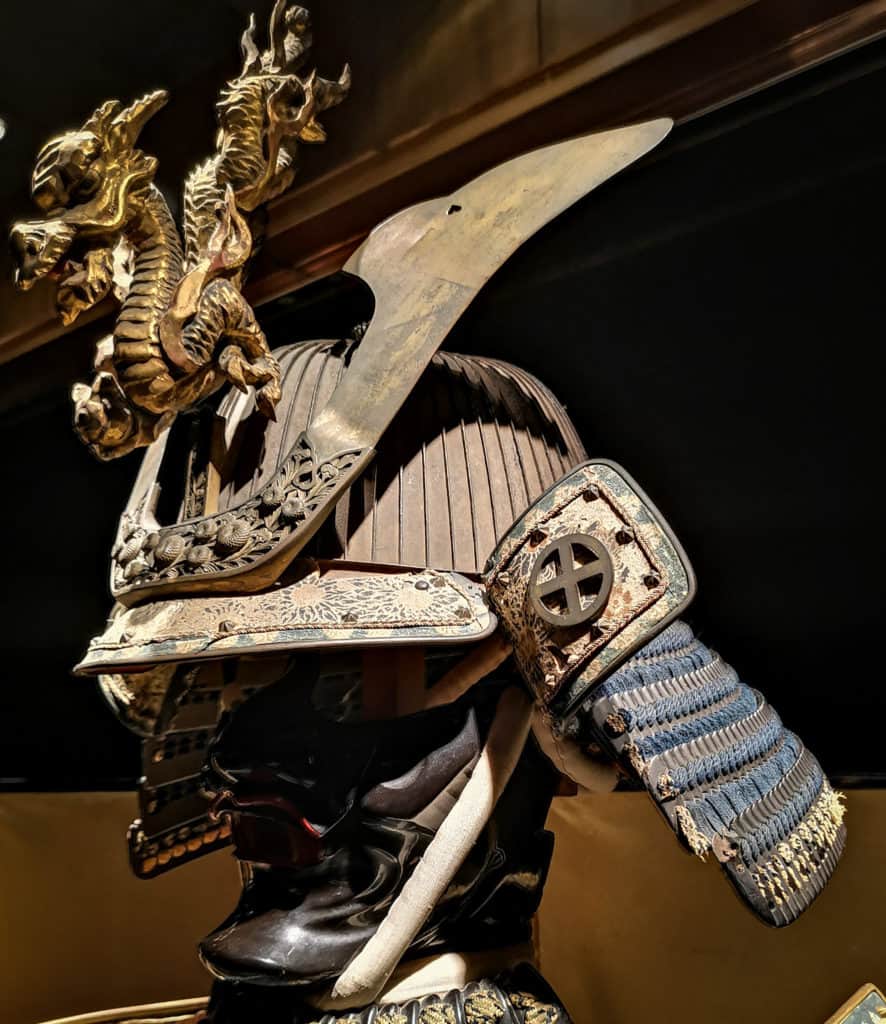When I think of Japan, the first image that comes into my head is.. samurai and ninjas! So when we where in Shinjuku, Tokyo the samurai museum was on the list to visit. Wanted to get schooled about the history and see actual ancient samurai armour in real life. Added bonus was each had a battle story to tell.
It was perfect timing as we entered the museum, we paid our 1900 yen and went straight into a guided tour of the museum. English guided tours run every hour or so.
We started with samurai armour from the Muromatchi to Edo period.
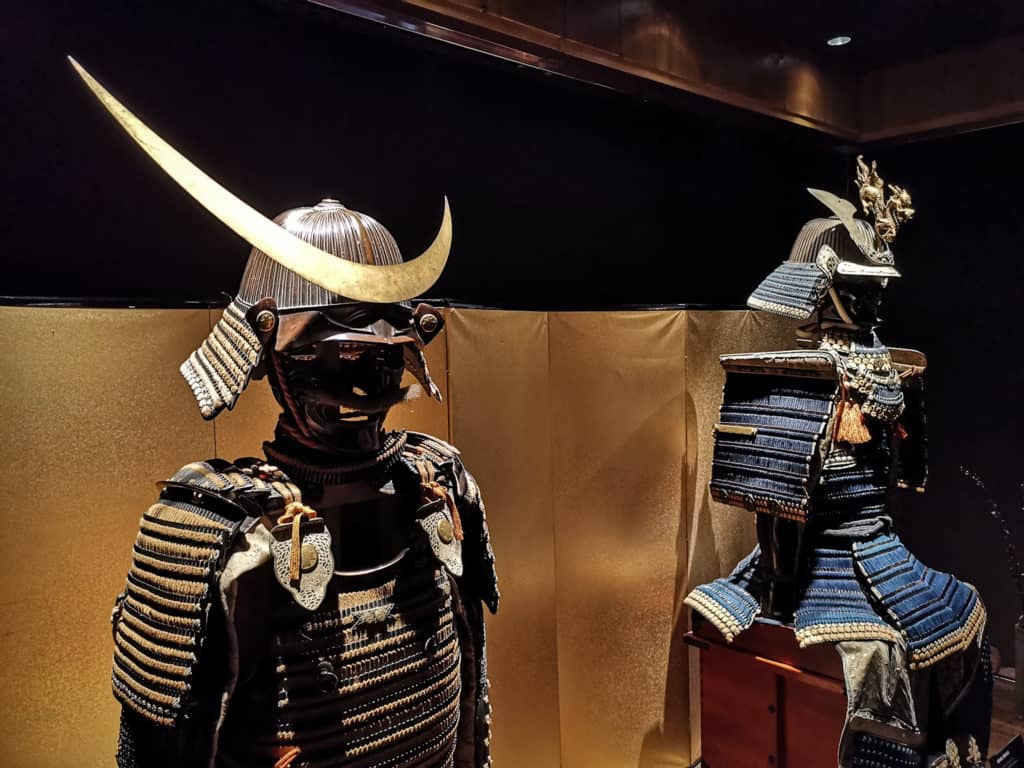
First they schooled us on the helmets.
The symbol on top of the helmet represented different attributes for different samurai.
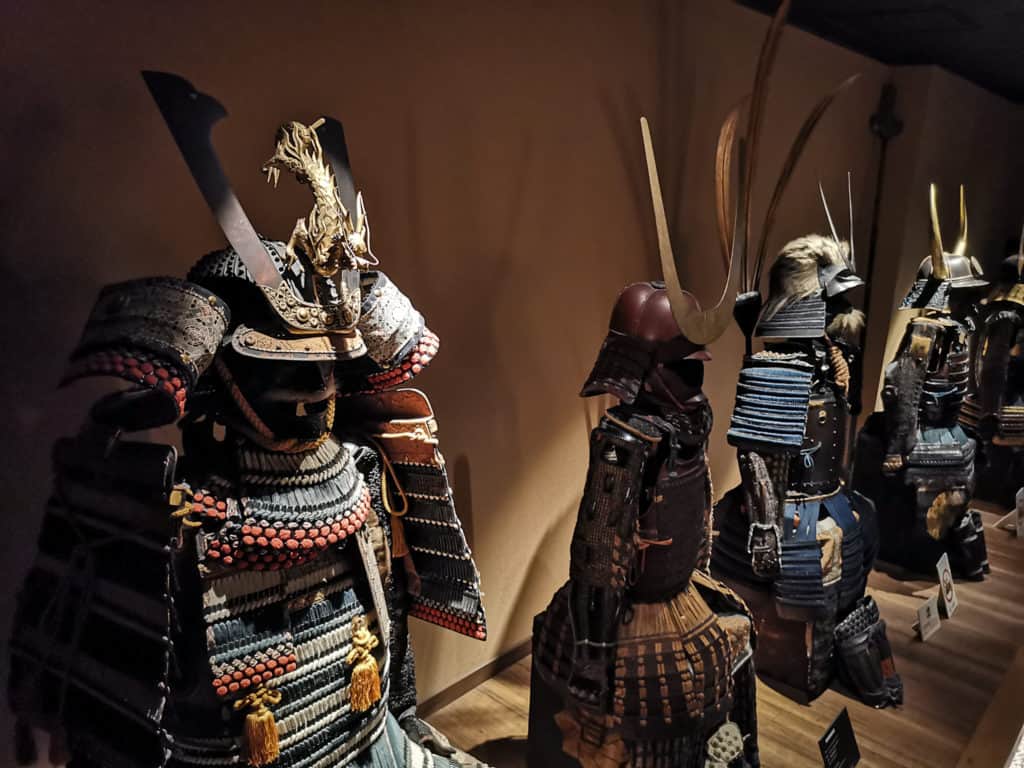
Some of the helmets also have mustaches. They would have these to make themselves look more intimidating to their enemy.
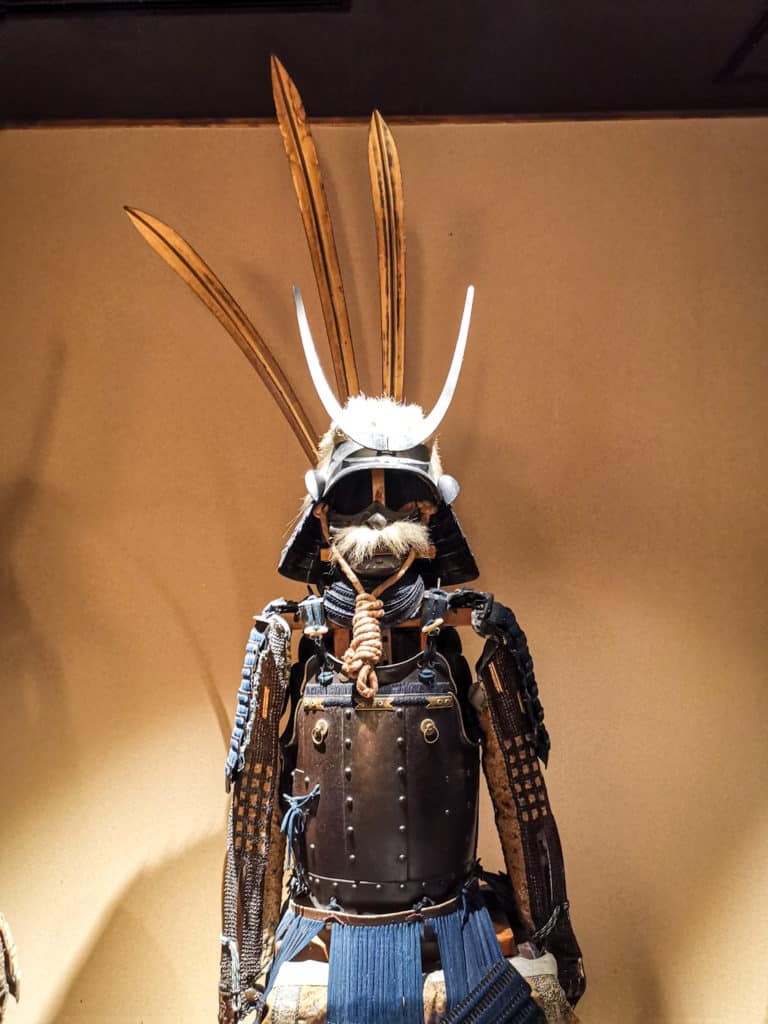
You could become a samurai at the age of 15, so it was important to disguise yourself from your enemy. That way they didn’t know who they were fighting
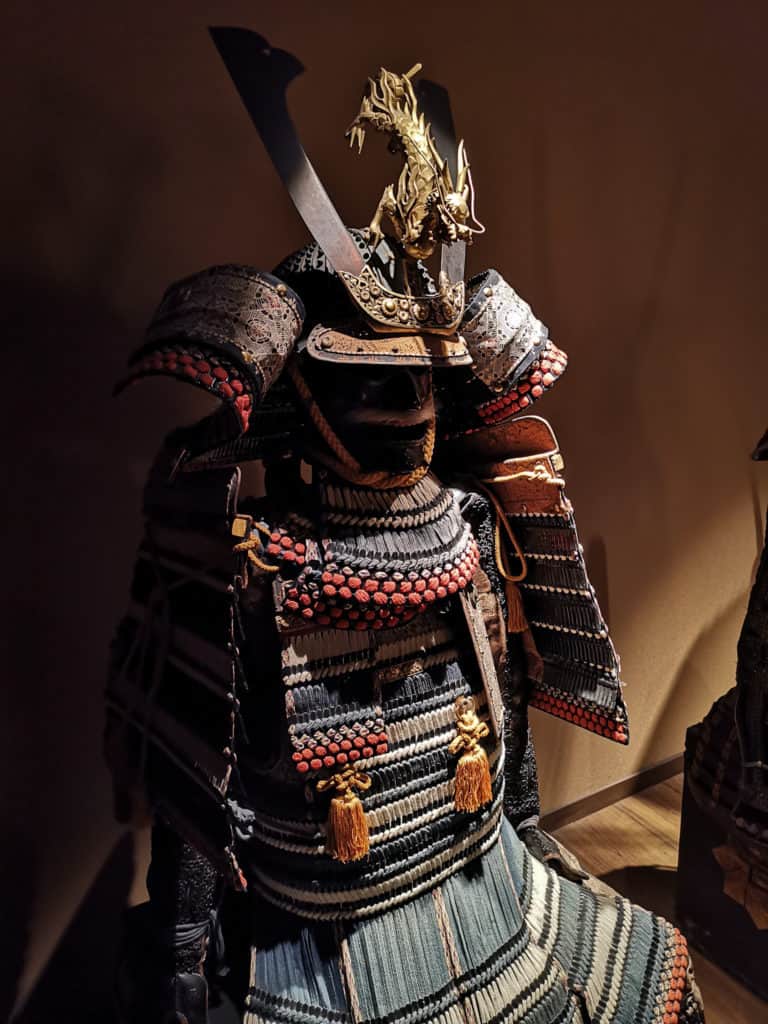
There was an old battle scene painting on the wall. The lady told us about when the samurai were at war and they were losing the battle they would retreat to a safe place to commit seppuku.
Seppuku or also known as harakiri is when they disembowel them self by cutting open the gut to release their spirit.
There would be one guy that would hang out with the samurai that would help with this ritual. As disembowelment took a long time for the samurai to actually die. So his job was to cut of the samurais heads once they have done the seppuku. He would collect the heads in a bag and keep them safe because the worst case scenario is if the enemy gets a hold of their heads.
Now we headed upstairs to see the rest of the museum. Once up there we had to take off our shoes to explore the rest of the museum.
The first room we entered featured katana blades and a child’s samurai armour.
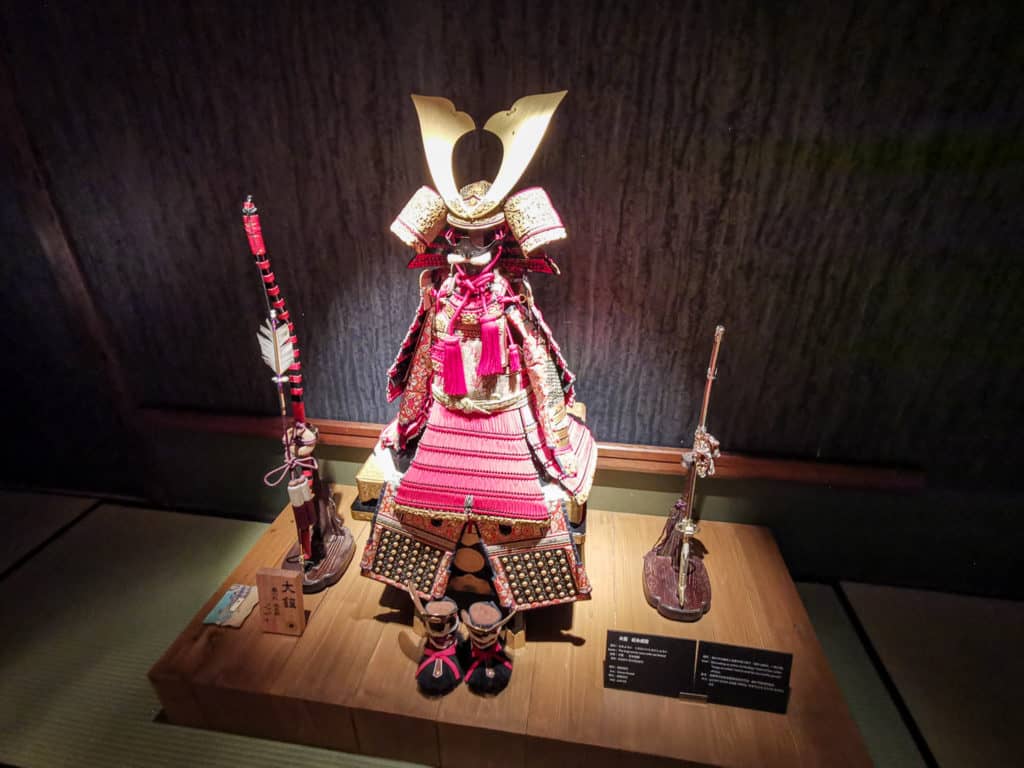
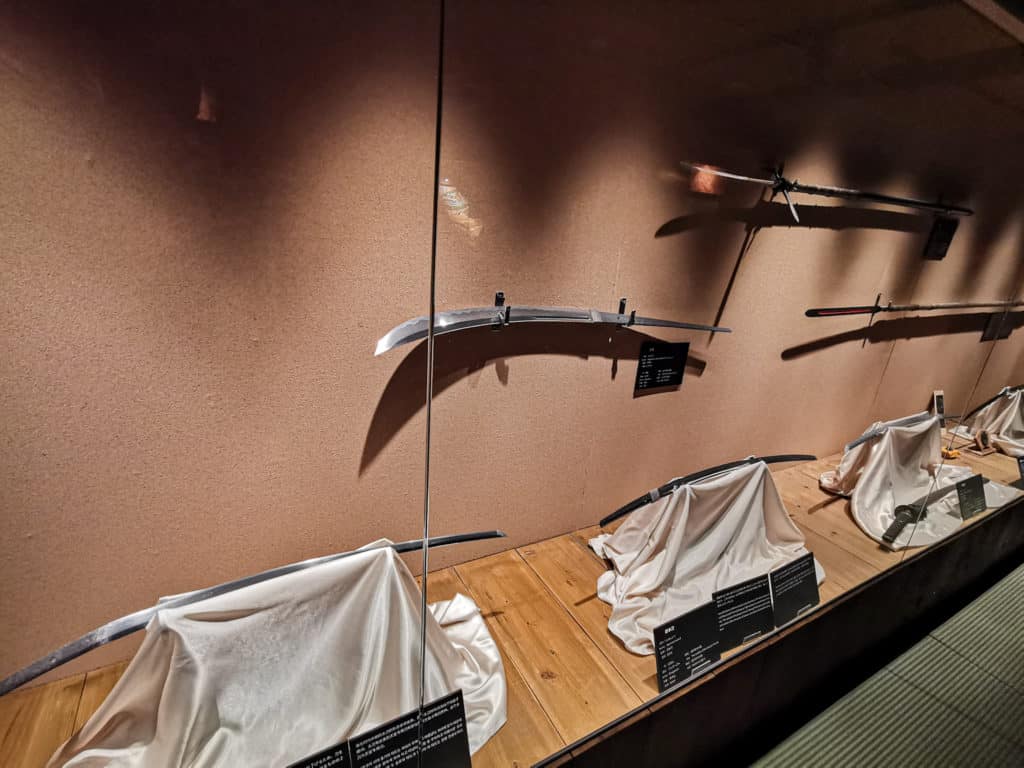
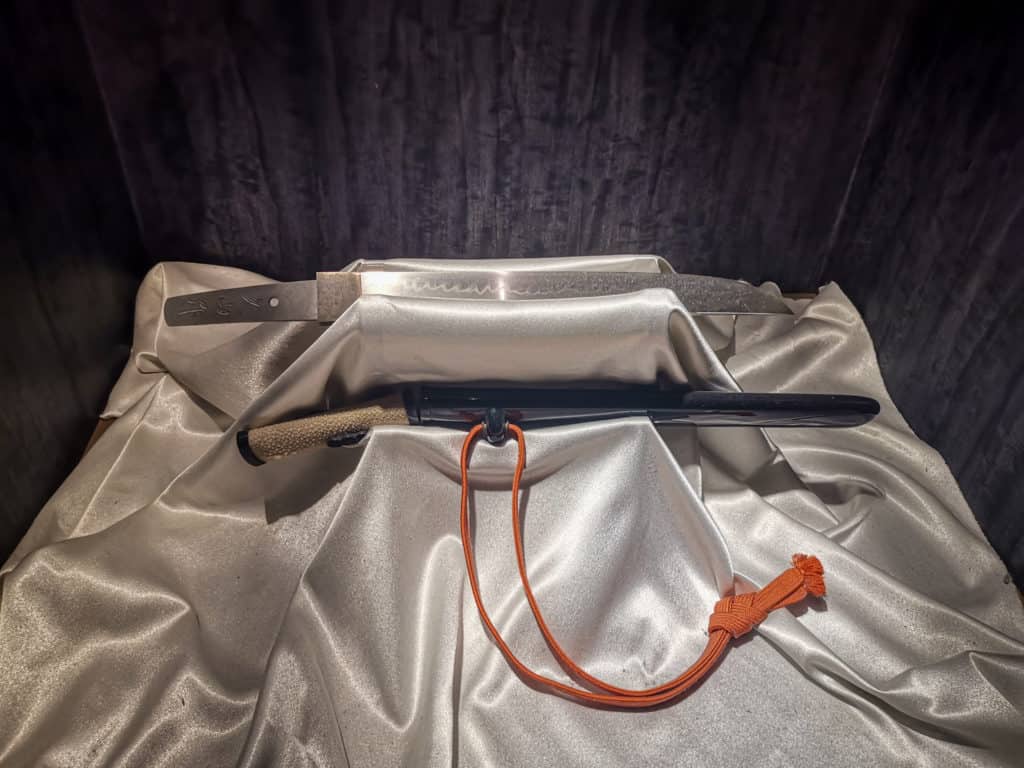
Also in this room was another old painting. Which told the story of when Kublai Khan, Genghis Khan’s grandson sent his boats from China to invade Japan. But on the crossing a typhoon ripped the boat fleet apart and sunk all the boats.
A couple of years later Kublai Khan sent more boats over to invade Japan. Again a typhoon destroyed all the boats!
Seven years later he sent his third fleet of boats to invade Japan, and again a typhoon destroyed the fleet!
So after three attempts of trying to invade Japan he failed.
Now the Japanese seen this as a God was protecting them. This is where the term kamikaze comes from. Kami meaning God and kaze meaning wind.
So the god of wind protected them from the invasion.
The Japanese used the same name kamikaze in the second world war in hope to have the same victorious results. It was very interesting to hear this story.
The second room featured different helmets from samurais.
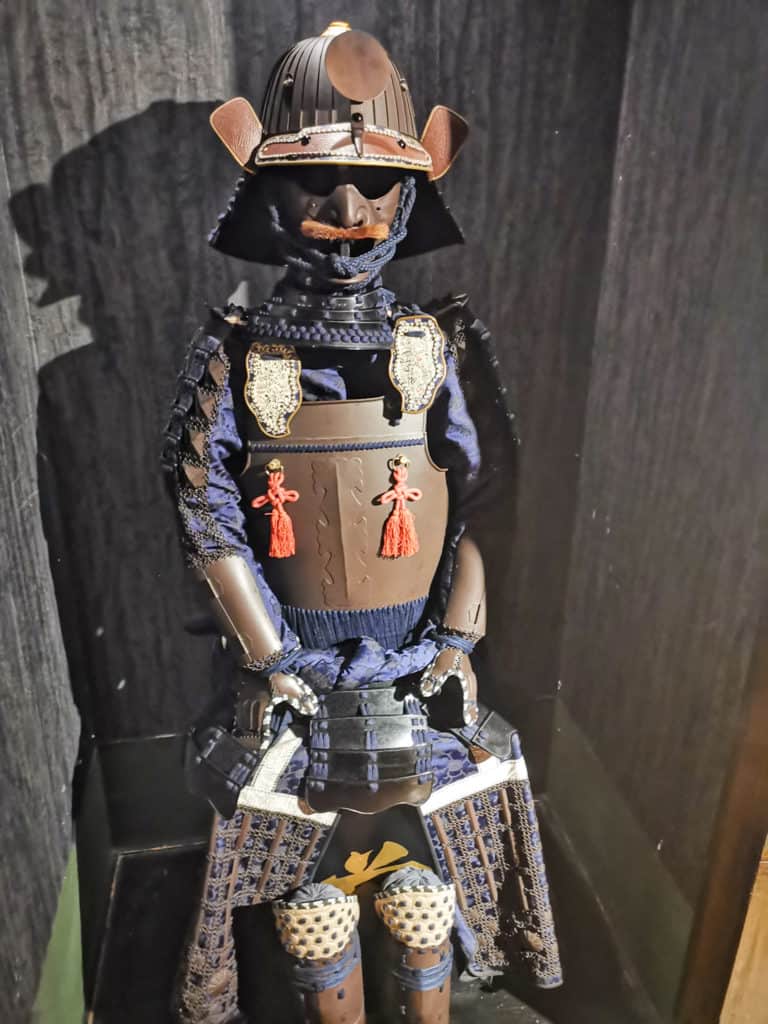
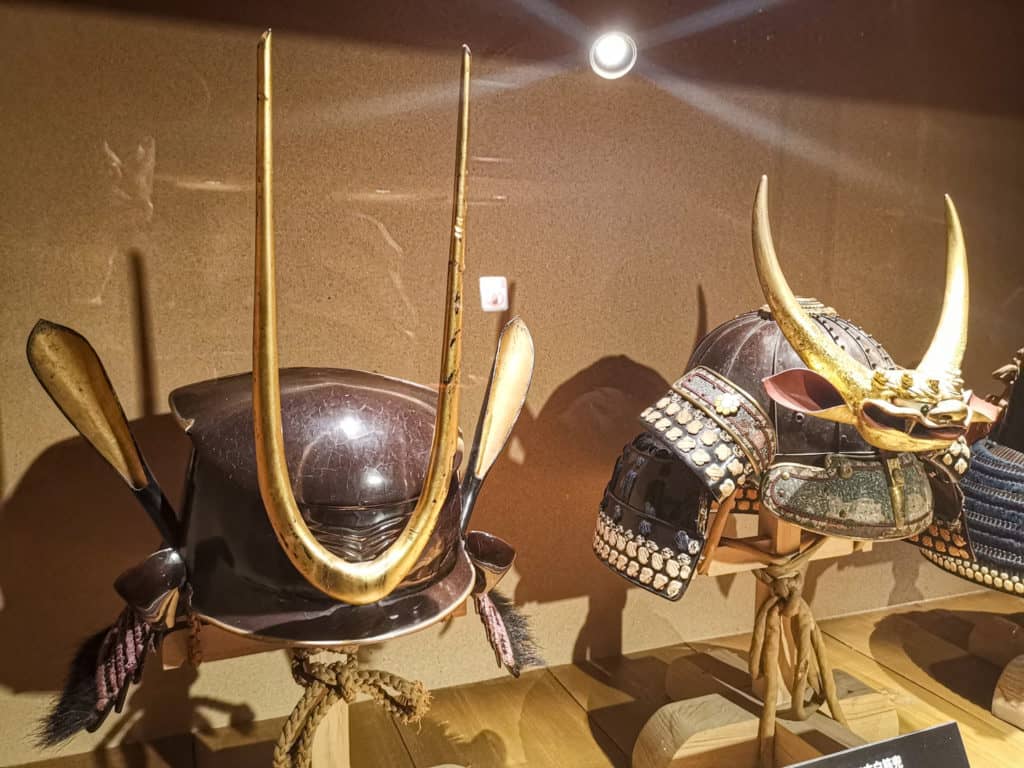
Another room had a full samurai armour and they showed us the steps it took to put on the armour.
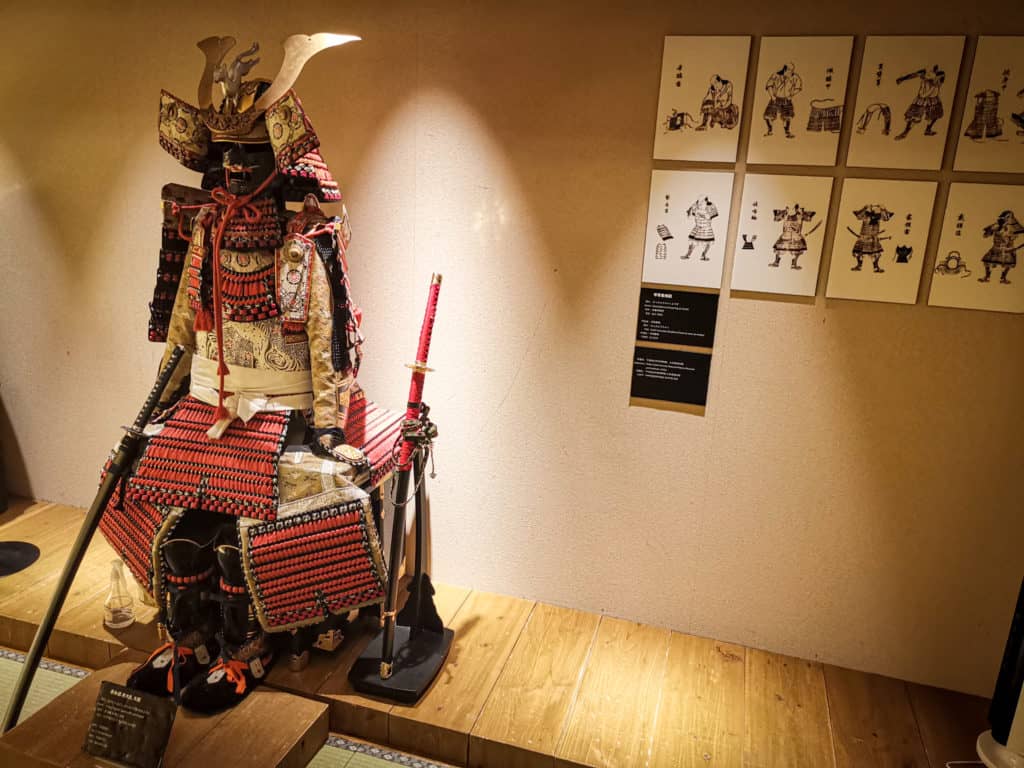
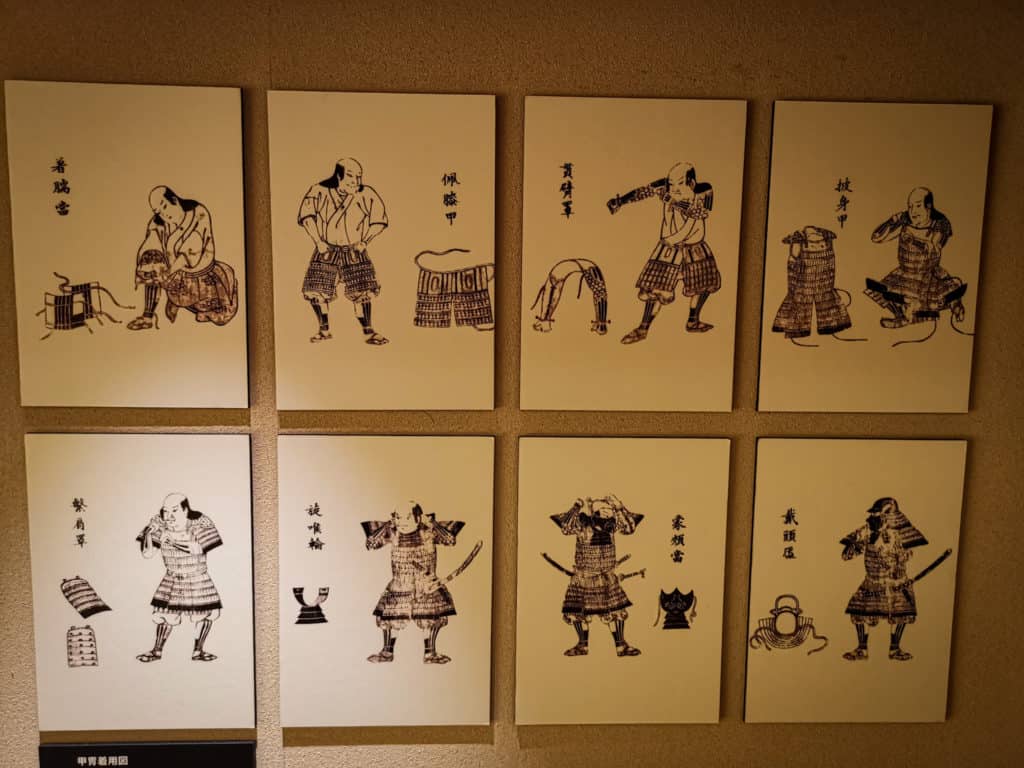
All the armours in this room had damage from battles. One of them even had a bullet imprint from where the samurai was shot through his armour.
Which takes us to the next room. This was all guns from the the era, when samurai were first introduced to guns.
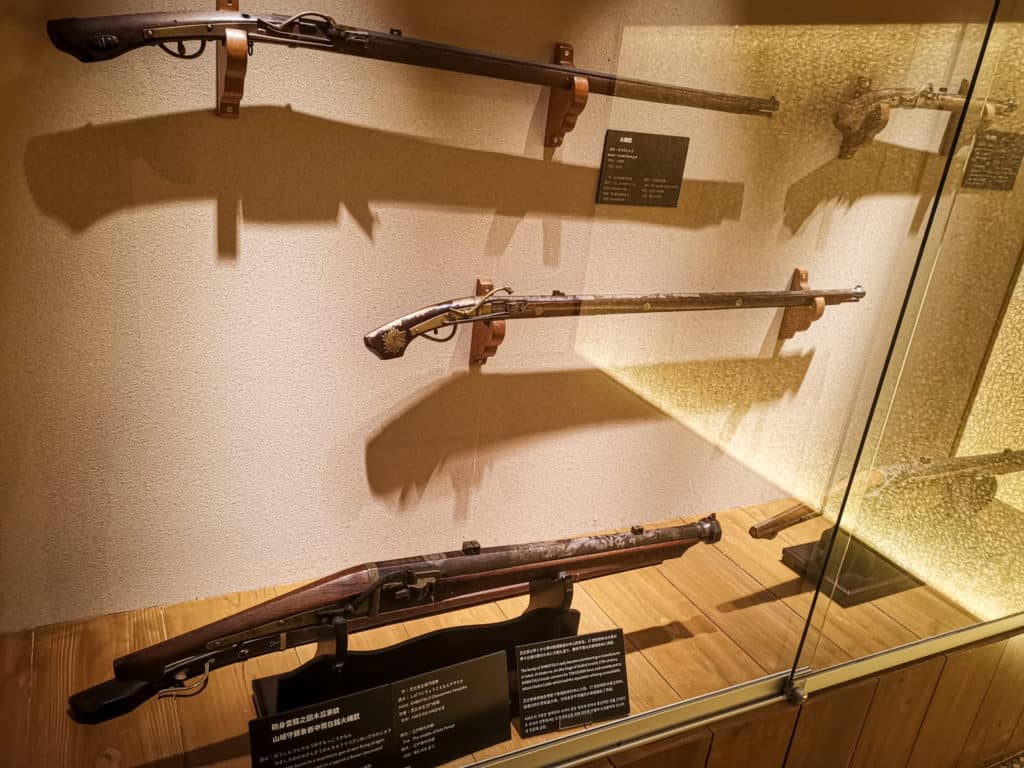
They got the blacksmiths and sword makers to reverse engineer the guns to make their own. So much so, that at one point Japan had the largest stockpile of guns in the world.
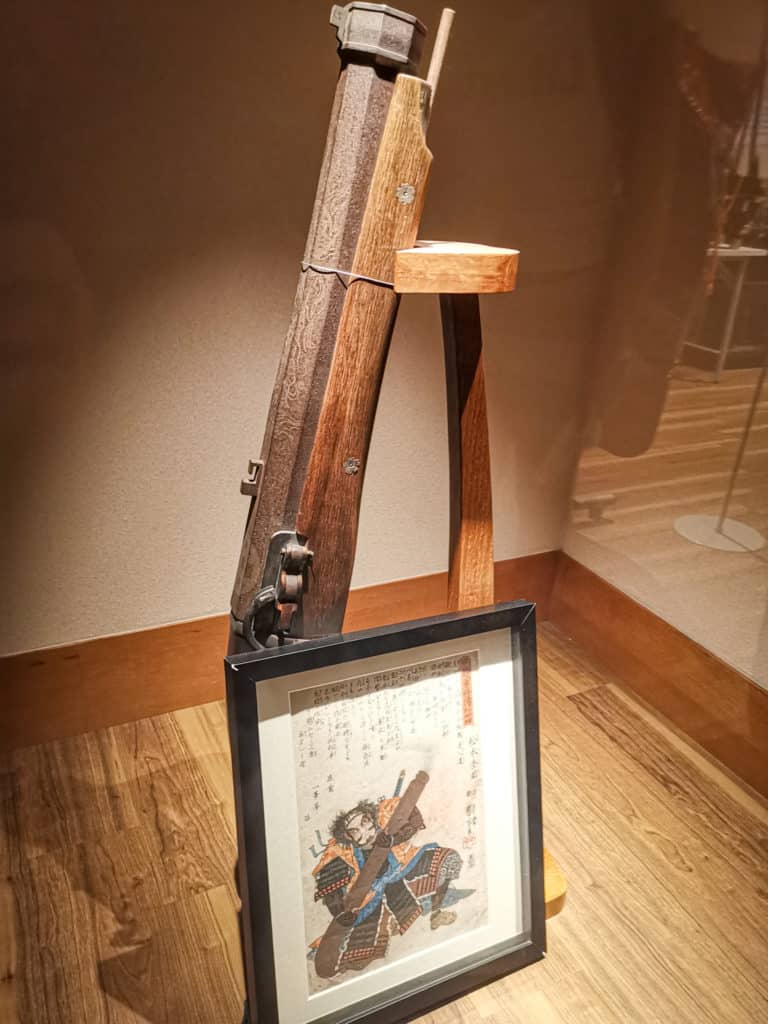
In the last room there was some more amazing armours on display, which is what this samurai museum is known for.
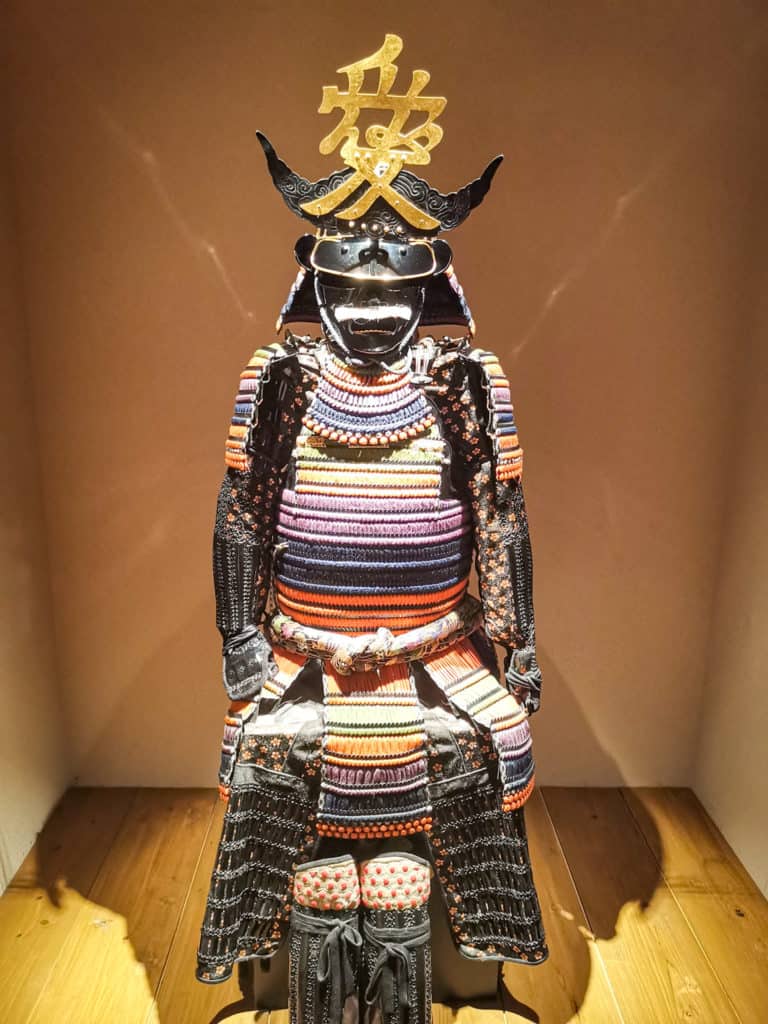
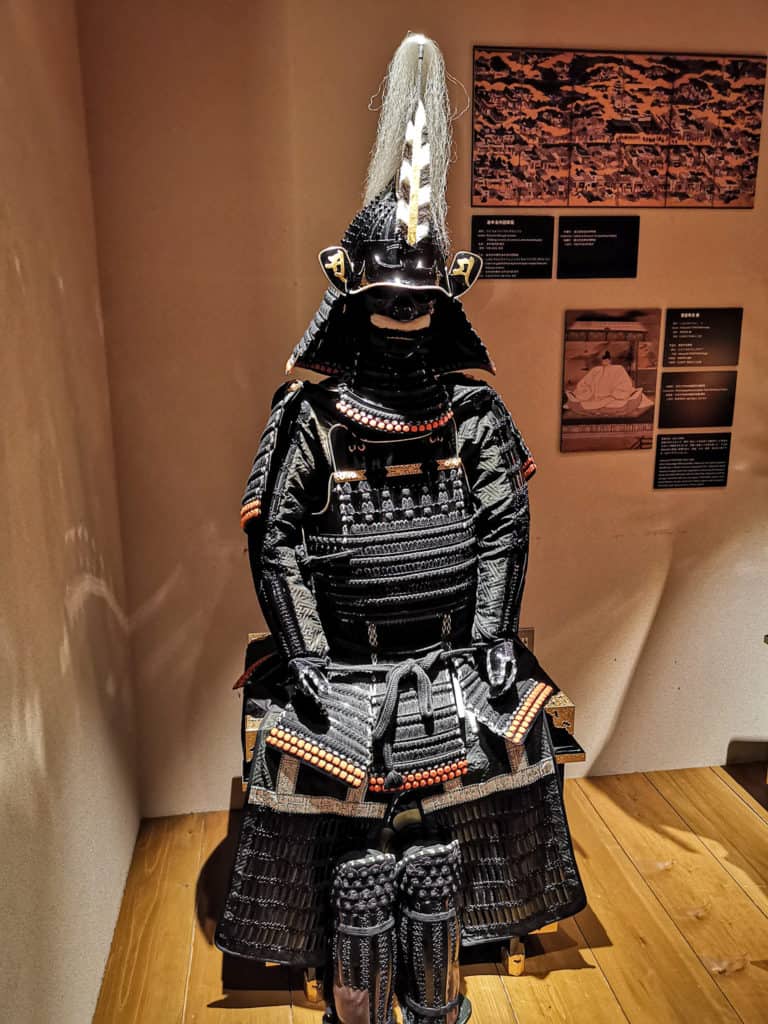
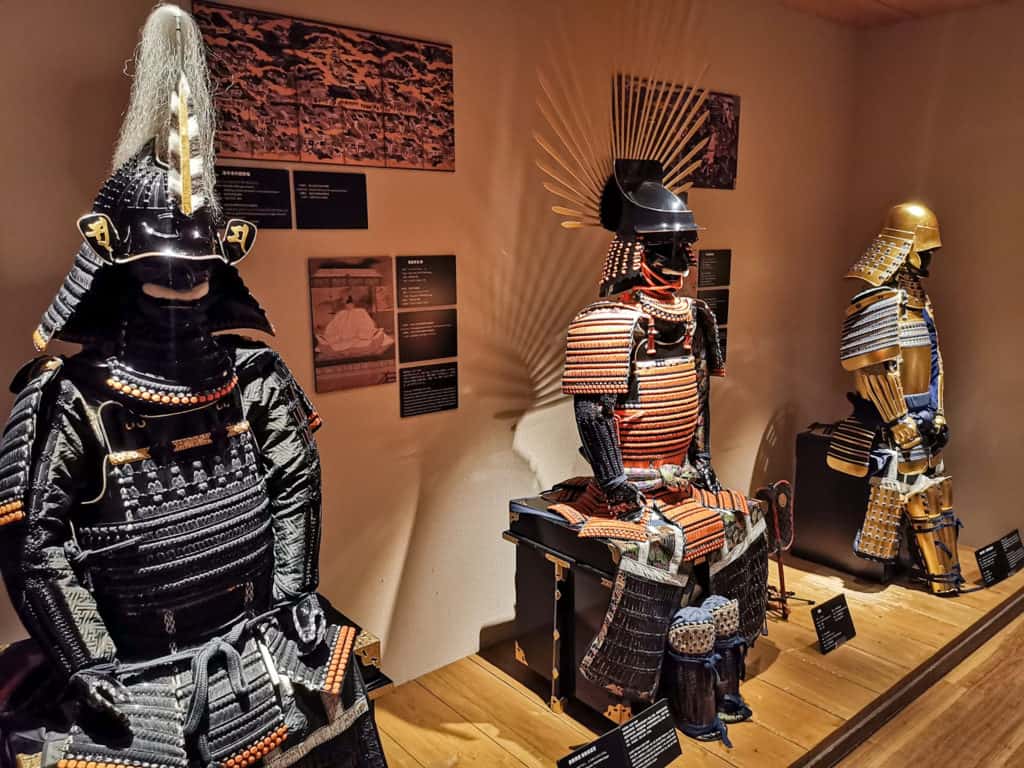
Then we we’re treated to a live samurai showdown.
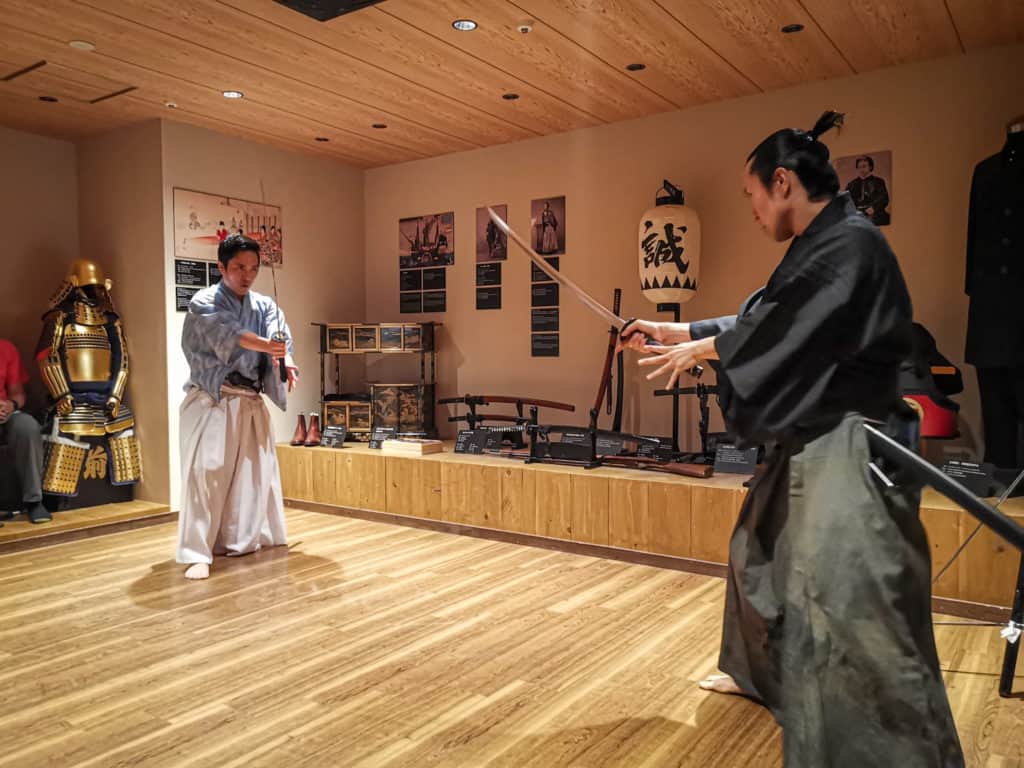
These guys have their skills on lock!
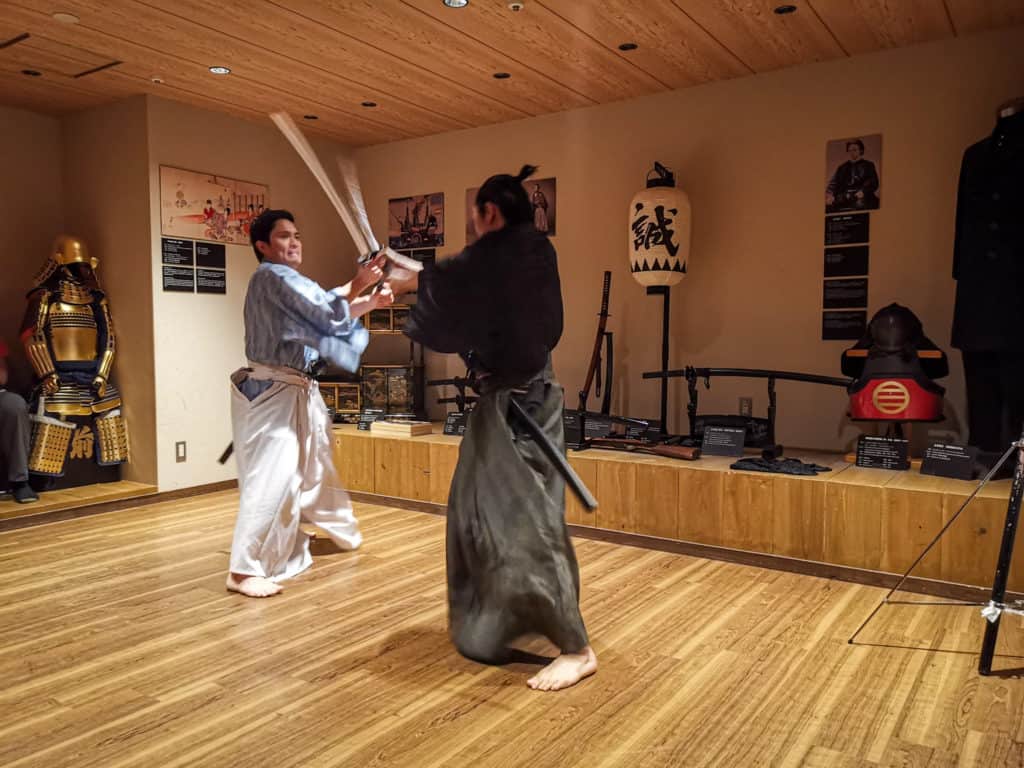
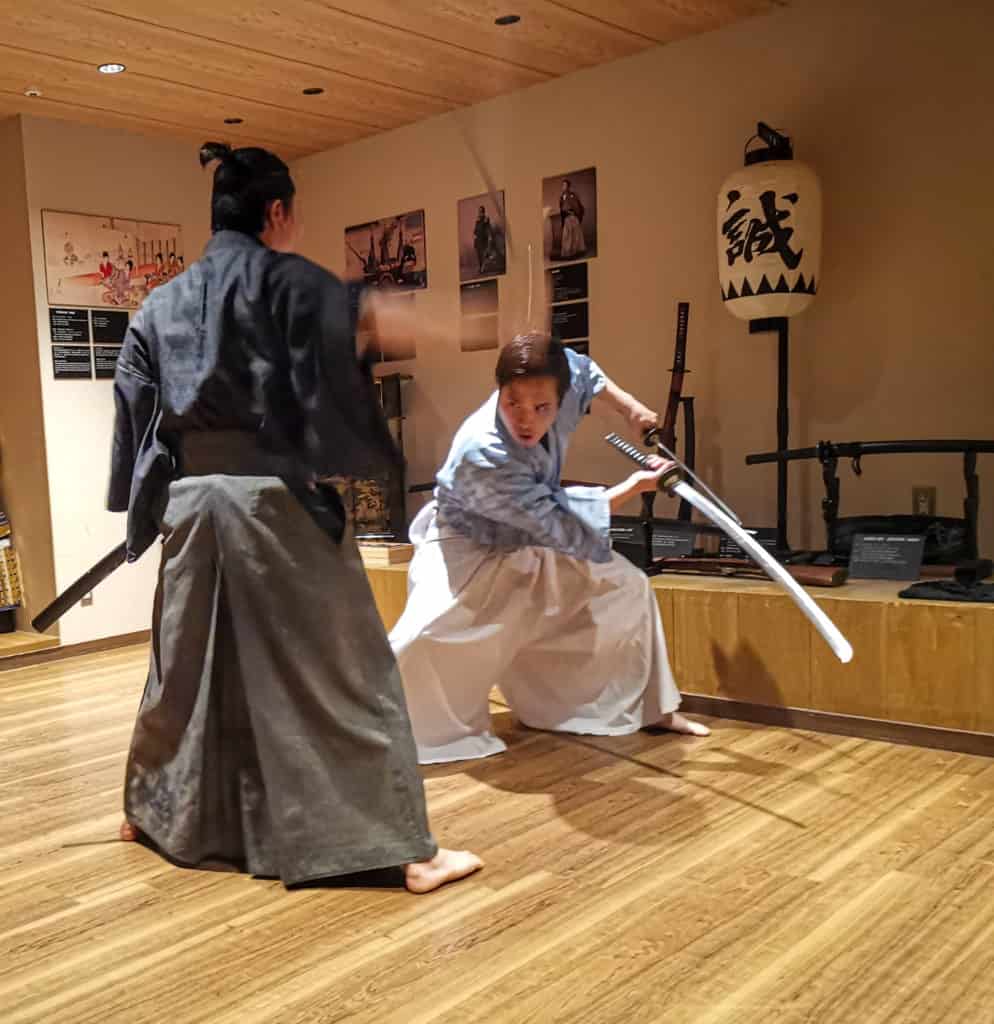
It was very entertaining to watch the two samurai battle it out to the death.
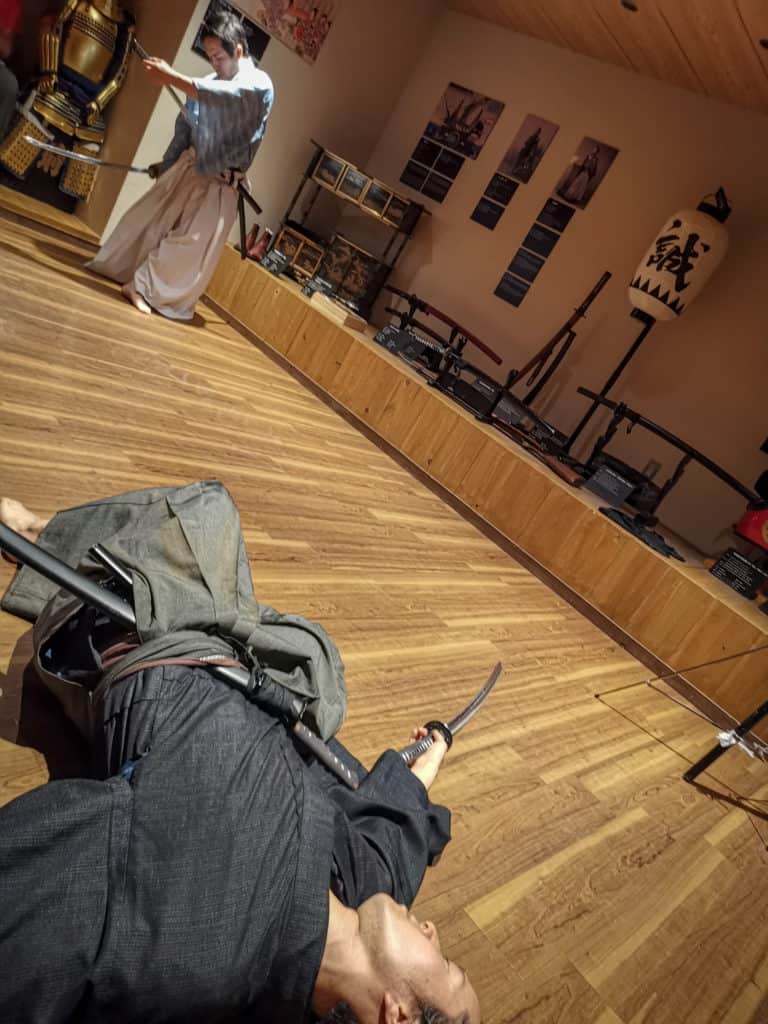
At the end they asked if we would like to dress up in some samurai costumes. Of course we would 😊
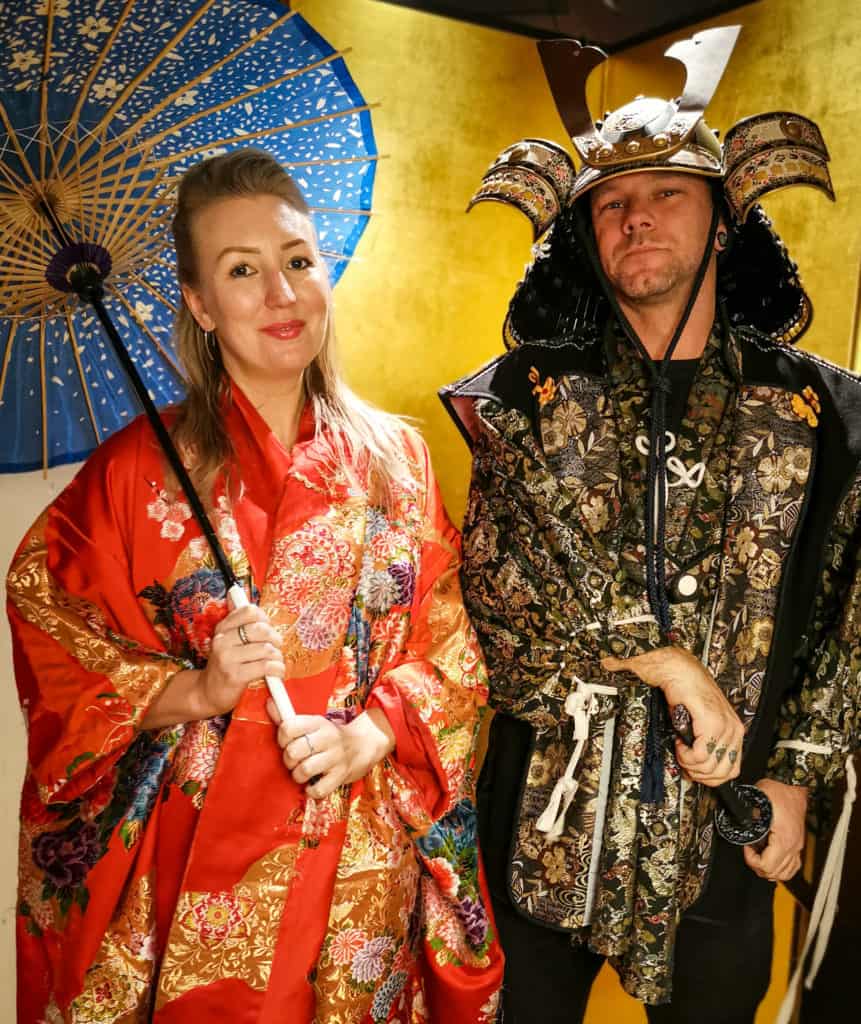
So if you are ever in Shinjuku, Tokyo I highly recommend checking out the samurai museum, and don’t forget to exit through the gift shop. For more info on the Samurai Museum here is their website
Thanks for stopping by
Happy travels
For more blogs from Japan check these out 🙂

